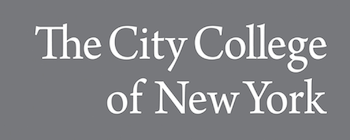From background knowledge, I am aware that the Bronte sisters, in general, depicted strong and independent female characters, which normally do not follow the traditional roles from their time. Specifically, the excerpt from Jane Eyre by Charlotte Bronte, it depicts the main character, Jane, who is represented in society as an independent woman, able to set and achieve her goals, despite any negative comments or challenges that come her way. Traditional gender roles are subverted in the excerpt, where a strong female role is given to Jane and her soon-to-be husband takes on the role of inferiority as he pleads with Jane, to listen while he explains his past and the decisions he made which currently prevented them from uniting in holy matrimony.
Even as Jane learns spontaneously and unexpectedly of Mr. Rochester’s past, she is certain to keep a firm hold on her emotions and reactions. She was able to internalize negative feelings, while externally portraying a completely different reaction. For instance, the text states, “My nerves vibrated to those low-spoken words as they had never vibrated to thunder…But I was collected, and in no danger of swooning. I looked at Mr. Rochester: I made him look at me.” (Bronte 122). In other words, Jane holds evidence of the fact that she is capable of completing such a task, while being humiliated from learning about the unknown wife Mr. Rochester got fooled into marrying. Portraying a different reaction than what was experienced internally, definitely highlighted Jane’s significance in misrepresenting the gender roles of women in the nineteenth century. In that time, women are solely dependent on their husband and would treasure marriage as it is a necessity for their social status and hierarchy. If any traditional woman learned of this news, they would have negatively expressed their disgust and hurt in front of the crowd. Another example in the text is, “…I lost my consciousness: for the second time in my life – only the second time – I became insensible from terror” (Bronte 121). Even when discussing her traumatic events of the night she witnessed someone with “purple…Lips swelled and dark… Bloodshot eyes” (Bronte 120) Jane repeated and emphasized the fact that she was unable to comprehend the events after the disturbing occurrence for only the second time in her life. She emphasizes this fact, so she is not deemed as a weak woman or as a woman who is considered senseless. Jane is almost always fully aware of what is being conducted around her, just not in that rare specific moment.
Furthermore, not only are the female gender roles subverted, but the male gender roles are destabilized as well. For example, Mr. Rochester is not portraying the standard social role represented in the nineteenth century because he does not possess the qualities to make him a patriarchal figure. Instead, he pleaded with Jane in order for her to listen to what he has to say about the whole situation, rather than her acting off of what Mr. Mason said. The text states, “Just put your hand in mine, Janet, that I may have the evidence of touch as well as sight to prove you are near me” (Bronte 126). This detail demonstrates the significance of Jane to Mr. Rochester as he needs her moral support along with physical encouragement, in order for him to continue telling his horrendous past being married to Ms. Mason. In the nineteenth century, men are dominant figures, who demand objectives from their significant other, without asking for their particular permission. On the contrary of this norm of male social behavior, the text states, “Jane, I will not trouble you with abominable details” (Bronte 127). Mr. Rochester is taking into consideration how Jane must be feeling about unexpectedly learning of these events, when they should be getting married. He understands that she may not want as many horrific details, but as long as she understands the circumstance he was in, she would be able to make a rational decision on whether or not she wants to stay and continue to be wedded to Mr. Rochester.
Roles from each side, both female and male are subverted in the excerpt. Even though, each still follow certain expectations or norms for their gender, such as Jane wanting to get married; they both steer away from the typical nineteenth century love story. Instead, their story is full of remorse, dread and desire, as the main characters neglect and disregard common roles in the nineteenth century in order to achieve their personal goals and make others around them as content as possible. Depicting the subversion of gender roles in the nineteenth century, broadens social scopes and aspects as individuals are becoming familiar and comfortable with stepping out of gender norms.



